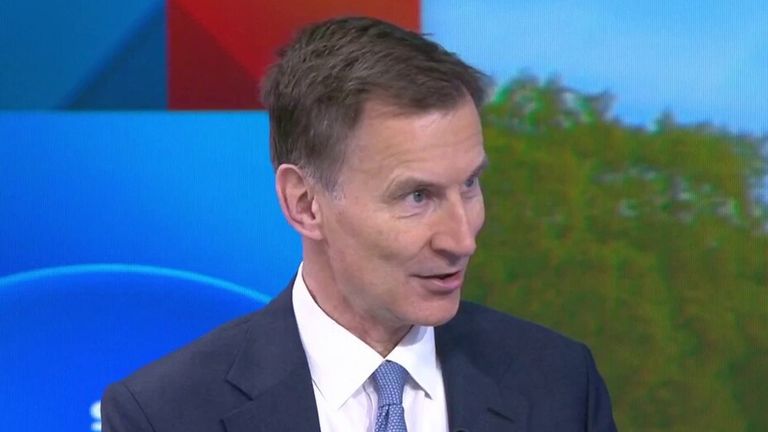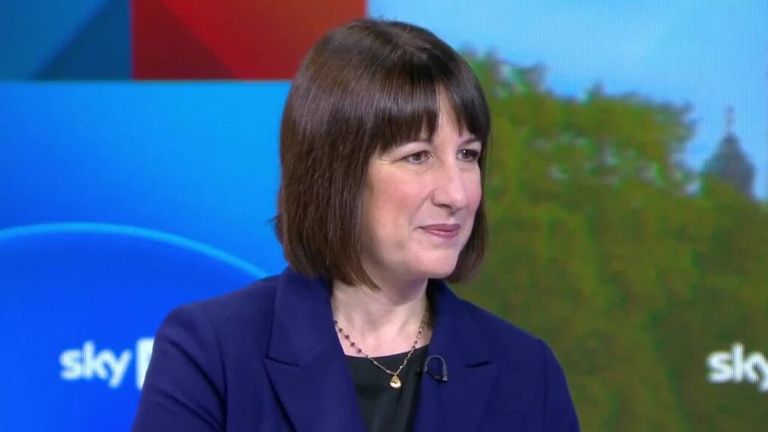Autumn statement unlikely to put big dent in tax burden – here’s why


It’s autumn statement time.
Once upon a time, these winter budgets used to be brief updates on the fiscal forecasts, never overshadowing the far more substantial main budget in the spring. Or at least so we’re told.
In practice, for as long as I’ve been covering economics, the autumn statement (or, as Gordon Brown used to call it, the pre-budget report) has simply been the chancellor’s second bite of the fiscal apple – a budget in all but name.
In other words, these statements are quite a big deal.
They have been used to raise taxes and cut them, to lift spending and lower it.
Indeed, it was at Jeremy Hunt’s first autumn statement last year that he introduced some of the tough measures designed to clear up the economic mess following predecessor Kwasi Kwarteng’s mini-budget – freezing income tax and national insurance thresholds all the way until 2028, consigning millions of families to higher taxes.
This time around, we’re all being told that the story will be very different – in particular that tax cuts are now imminent.
We’ll get to those cuts in a moment – and the bizarre pantomime of a government claiming it is cutting taxes even as it does precisely the opposite – but let’s start by getting the “headroom” stuff out of the way.
If you’ve been following any of the coverage of the impending autumn statement, you’ll doubtless have read about how the chancellor may now be ready to start cutting taxes, because he’s been told he has enough “headroom” to do so.
Advertisement
Please use Chrome browser for a more accessible video player
16:04
Chancellor Jeremy Hunt has said
It all sounds rather scientific, doesn’t it – as if a universal measure of fiscal probity has determined that now would be a sensible point to reduce taxation. Except, of course, it isn’t.
Actually in this case, “headroom” means something very specific indeed.
This government, like most of its predecessors since Gordon Brown, has set itself some fiscal rules designed to shore up confidence in its policymaking.
The main rule facing Mr Hunt is that he has committed to getting the national debt falling as a percentage of gross domestic product (GDP) within five years.
This is, I can’t emphasise enough, a self-imposed rule. Sure: in the light of what happened to the previous Tory government (which briefly eschewed fiscal rules) there’s a strong argument for these rules. But they are not, by any means, tablets of stone.
Read more:
Public have a duty to work, minister says, as benefits shake-up looms
Chancellor says ‘everything on the table’ for autumn statement
Autumn statement 2023: What could the chancellor announce?
Please use Chrome browser for a more accessible video player

14:25
Labour’s plans for the economy
Regardless, the debt rule is where that notion of “headroom” comes from. By the end of the five-year forecast horizon mapped out in March (the budget – the last time these figures wreak havoc updated) the UK’s net debt was falling ever so slightly. The fall was equivalent to roughly £6.5bn. Voila: that’s the headroom!
Roll on another six months and a few things have changed.
First, the economy looks a bit bigger than it did in March. This is partly because it has grown a little faster than expected, but mostly because the Office for National Statistics has reassessed its opinion of the size of the economy.
Also, because inflation was higher than expected, the cash size of the economy looks a bit bigger, while the national debt’s size is less changed.
Tot it all up and, due to these mostly statistical artefacts, all of a sudden the national debt as a percentage of that GDP figure looks a bit smaller. The upshot is the apparent “headroom” against this rule is significantly larger: possibly £15bn or maybe even over £20bn.
These sums are, it’s worth underlining, quite arbitrary. They mostly don’t reflect either that the economy is much healthier than it was back in March, or indeed that the government’s decisions have made much difference to the scale of the national debt. They are marked against an entirely self-written fiscal rule. And anyway, the “headroom” the chancellor is left with is still smaller than his predecessors tended to enjoy.
Despite all of those provisos, the government is likely to use these rules as a justification to start cutting taxes.
Yet there’s a big proviso here too. The total tax burden (the amount of taxes we as a country pay as a percentage of our national income) is rising.
Indeed, on the basis of the latest Office for Budget Responsibility numbers, it’s far higher now than it was before Rishi Sunak became prime minister, and is set to rise to the highest level since comparable records began in 1948.
These are the pieces of context it’s worth bearing in mind ahead of this event.
The economy is flatlining. The scale of Britain’s total debt is now far, far higher than before the pandemic. And it’s hard to envisage a scenario where the overall tax burden ends the coming year lower than when this chancellor took over.
None of this will stop Mr Hunt and Mr Sunak putting as positive a gloss on the economic update as they can. But their task will not be easy.